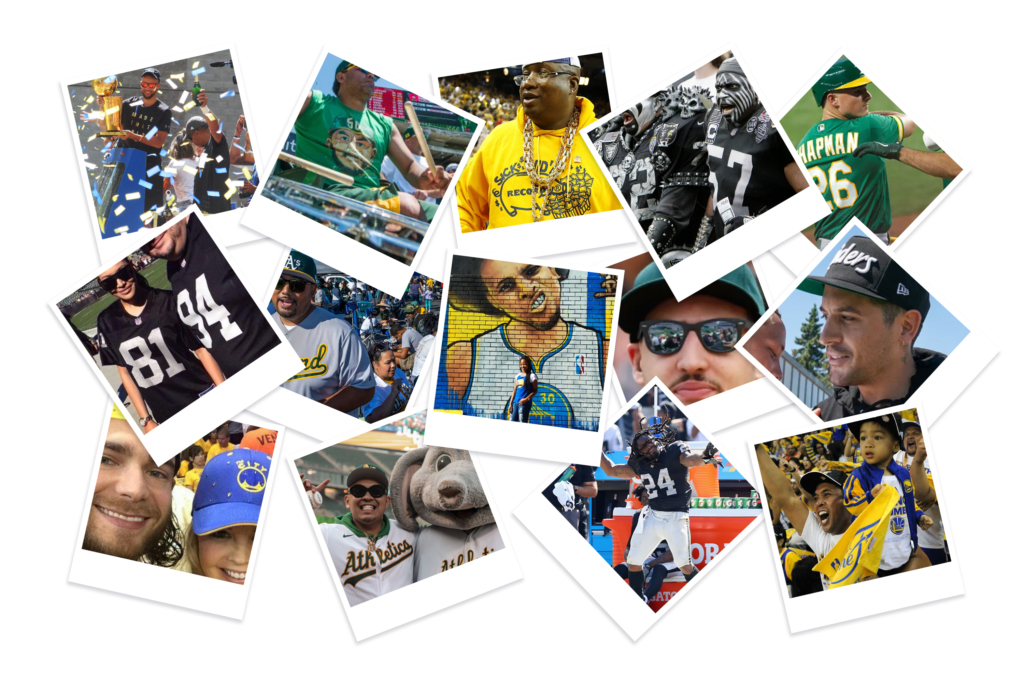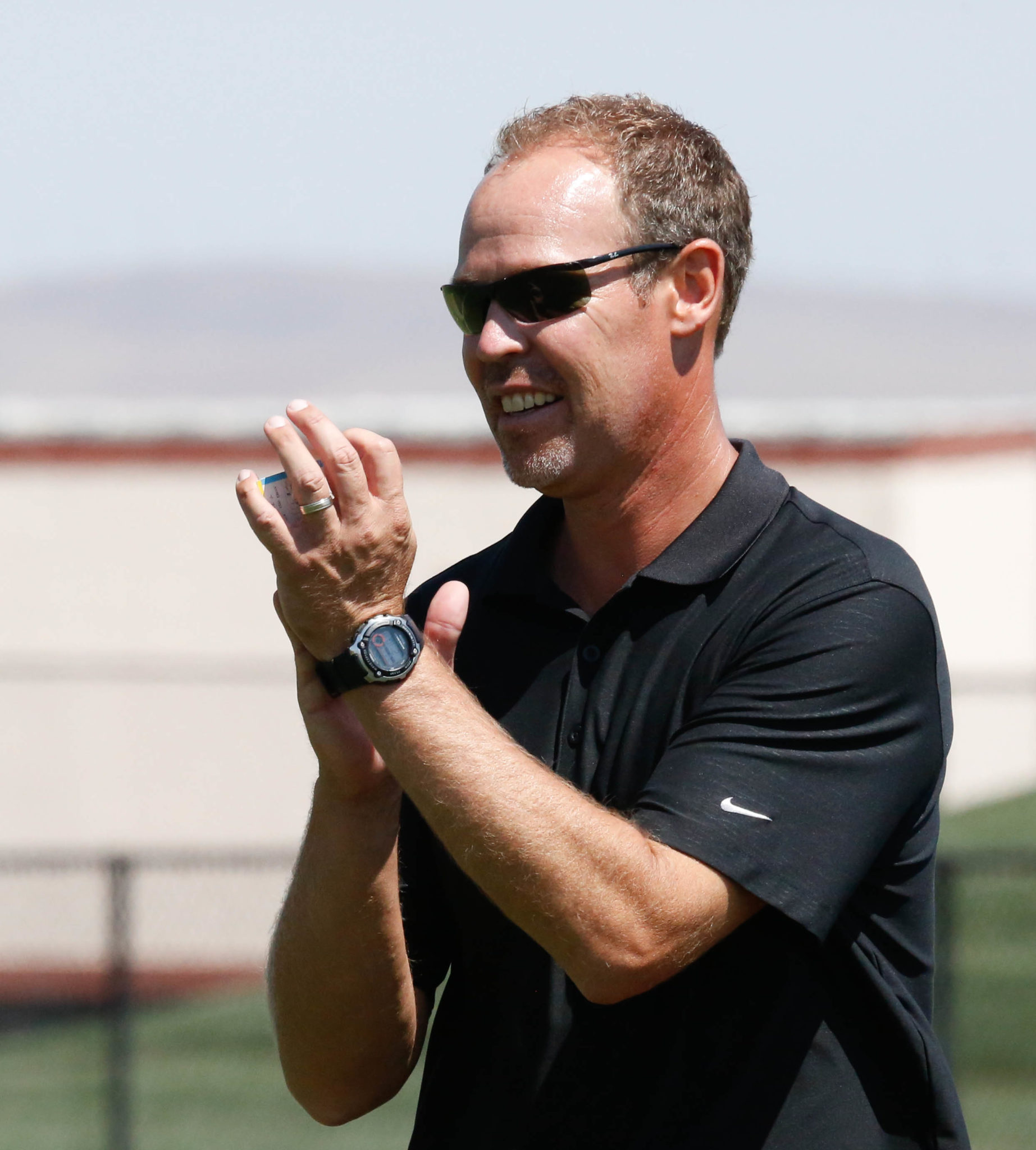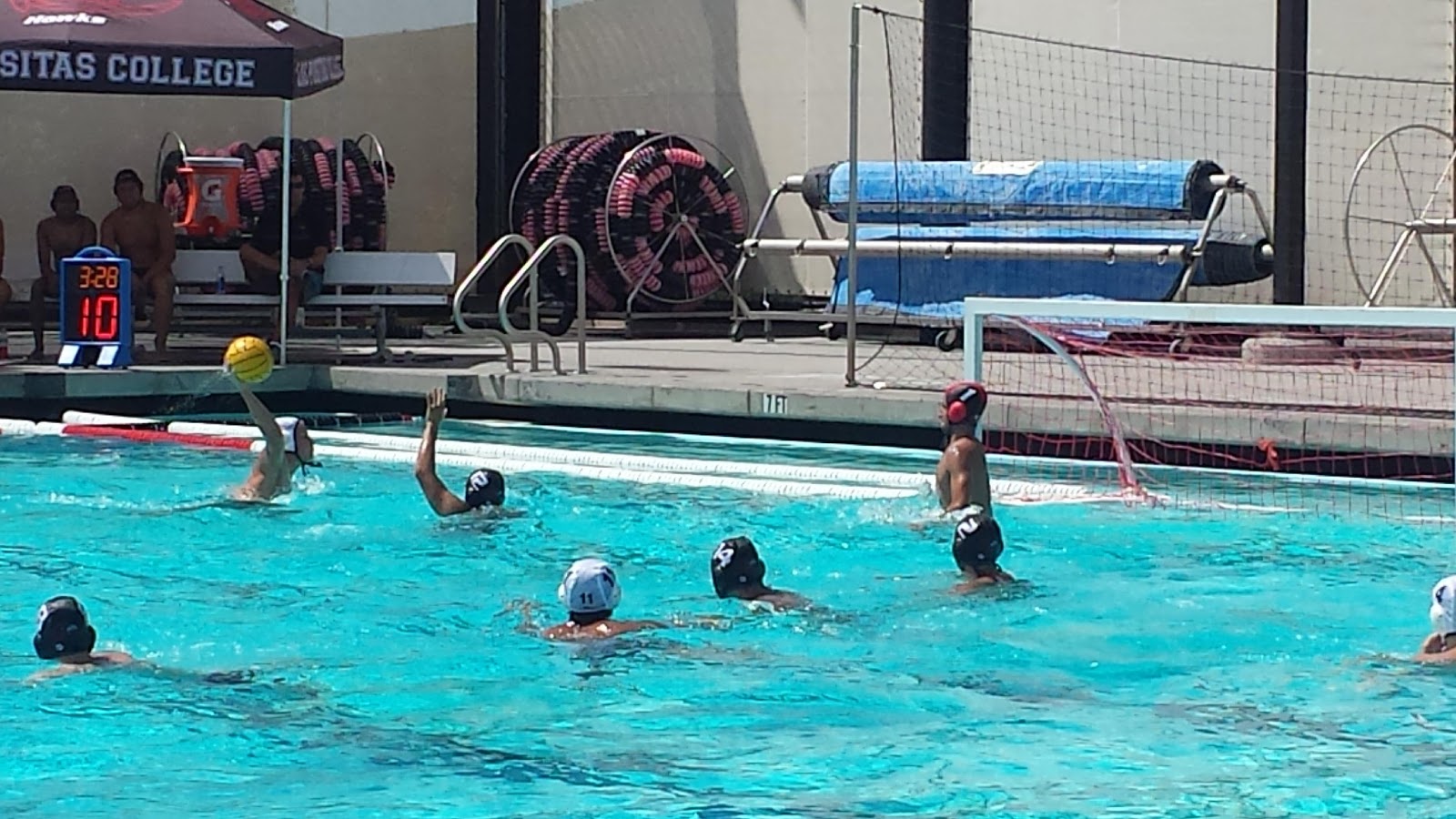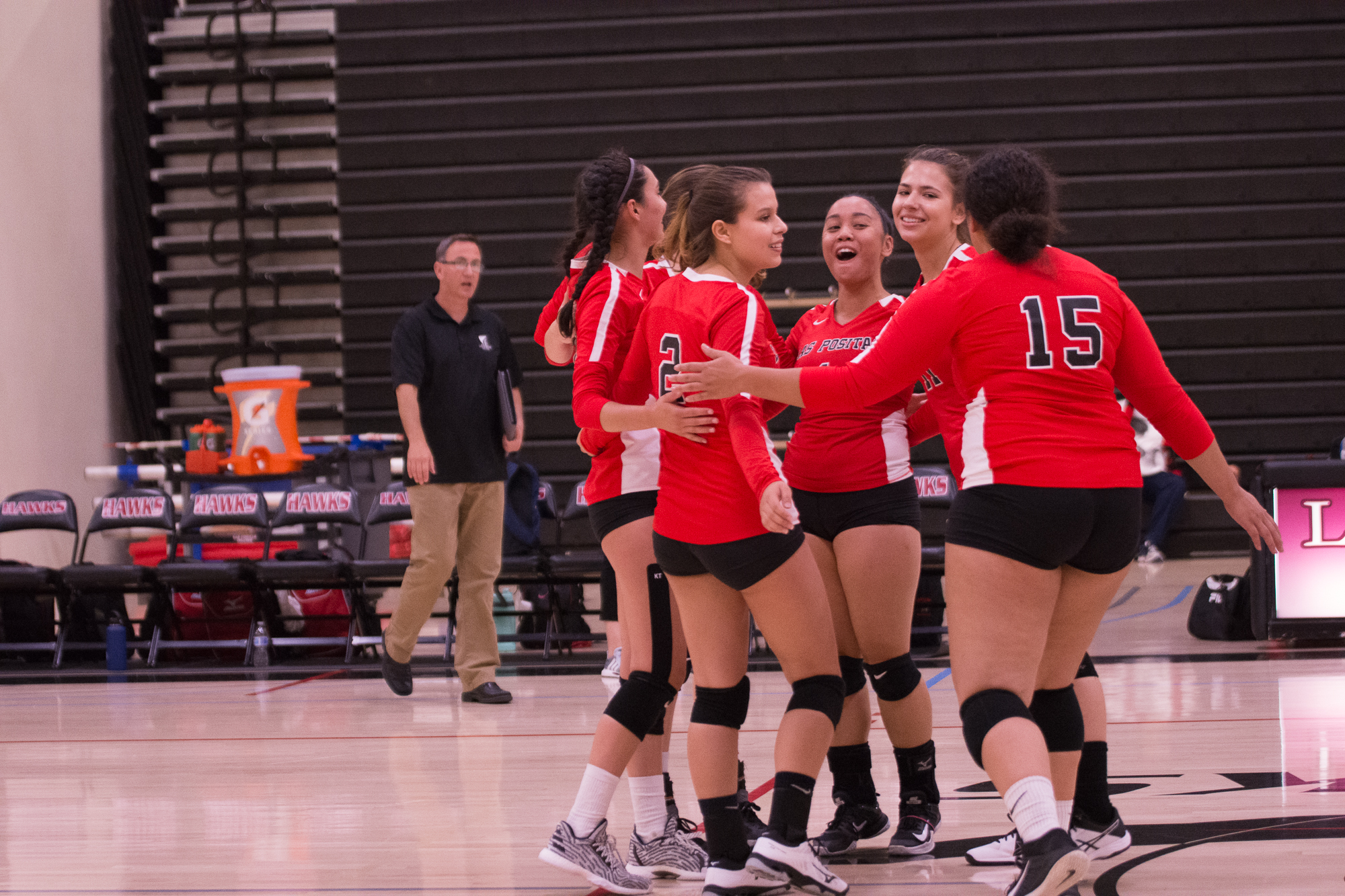As Stephen Piscotty rounded the bases of the famed Fenway park, six years ago this May, the mood in Boston was subdued. After all, their beloved Red Sox were suddenly trailing the Oakland A’s 3-0 with one swing of his bat.
But 3,100 miles away in Pleasanton, an emotional eruption was underway. Piscotty’s golf swing, launching an 0-2 pitch over the iconic Green Monster in left field, was a most poignant moment.
His mother, Gretchen Piscotty, lost her battle with ALS. She was 55. Her funeral was May 14, 2018. The next day, in his first at-bat since her death, Piscotty hit a home run.

“And to the Piscotty family in Pleasanton,” said A’s color commentator Ray Fosse, the former player turned longtime broadcaster who died in 2021, “if you’re standing and cheering or maybe a little tear, we know why.”
The why was because this special moment wasn’t just about baseball. It was about family. It was about his hometown of Pleasanton, where he grew up as an A’s fan, where he starred at Amador Valley High before playing college baseball at Stanford. It was about the whole East Bay.
When Gretchen was diagnosed with ALS in 2017, it became a national story. That’s because the St. Louis Cardinals, the team that drafted Piscotty, fulfilled his request to be traded back home so he could be with his mom for however long she had left. In December of 2017, the Cardinals traded him to the Athletics, his childhood team.
The story became about a baseball player, his team, his family and the community. It highlighted the relationship between a franchise and the cities where they live. The Piscotty’s were one of those families who bonded over sports. They too took BART to the Coliseum to watch the A’s, where dad, Mike, had season tickets. Then, Piscotty was playing for them. The hometown kid on his hometown team. He dedicated the season and his off days to his mom, who was being cared for by their circle of family and friends.
So when Stephen made his way around the bases after his emotional home run, and tapped his chest to pay tribute to his mother, it was more than just a home run. It was a moment for the Piscottys, and for the East Bay, and for the connection between sports teams and community.
“Sport teams are like cultural ambassadors for a region,” said Edreece Arghandiwal, co-founder of the Oakland Roots Sports Club. “They bring people together, create a sense of identity and pride, and provide a common rallying point for communities. Whether it’s through shared victories or shared defeats, sport teams weave themselves into the fabric of local culture, becoming a part of people’s lives.”
Piscotty’s moment is one the region may never get to experience again. The A’s, having already announced their plans to move to Las Vegas, sped up the timeline of their departure by striking a deal to play their home games in Sacramento until their Nevada home is ready. Starting next season, in 2025, they will no longer be the Oakland Athletics — just the Athletics, they say — and playing at Sutter Health Park, home of the Sacramento River Cats, the San Francisco Giants’ Triple-A affiliate. Oakland is months from having no major professional sports teams.
Not only will jobs be lost, but a community will lose its hub. Because while the relationship between the A’s and the fan base has long soured — as the A’s lowly attendance proves — losing the team will still hurt a region that was historically connected with its sports teams.
The Coliseum complex is in Oakland, but it’s been an epicenter for the entire East Bay of diehards. Now, fans wishing to take in the highest level of sports must go to San Francisco or Santa Clara, or leave the area altogether.
Raiders fans as far as Tracy have had multiple seasons to adjust to the Raiders move to Las Vegas. Since 2019, Warriors fans from Pleasanton, Walnut Creek and Richmond have had to go across the Bay Bridge for its Golden State fix. Now A’s fans are next adjusting to this new landscape.
What’s yet known is the lasting impact Oakland losing three professional sports teams in six years will have on the region. How will it impact the calendar of things to do? Is it as simple as switching teams and joining another community? Or must that void be filled another way? Because for so long here, major pro sports have been at the center of the social structure.
“It provides not only entertainment,” LPC sociology instructor Akihiko Hirose said, “but also a sense of community, a sense of belonging. …Losing that, I think it’s not a good thing for the city of Oakland, that’s for sure.”

The Coliseum Complex was built in 1966 in an industrial area of East Oakland near the airport. It included a stadium and an arena. By 1971, the complex was home to three professional teams. The Raiders of the NFL and the Athletics of MLB shared the 63,000 seat stadium while the Golden State Warriors of the NBA made the 19,200 seat arena its home.
By the end of 2024, Oakland will once again be void of major sports franchises.
The Warriors moved to San Francisco for the 2019 season after playing at the Coliseum arena for 47 years. Bay Area venture capitalist Joe Lacob, who purchased the Warriors with movie mogul Peter Guber in 2010, built a $1.4 billion stadium for the Warriors in the Mission Bay district.
Then, in 2020, the Raiders left the complex for Las Vegas. It was the NFL franchise’s second time leaving. The Raiders, who started playing in Oakland in 1960, moved to Los Angeles just two years later. But after negotiating a deal with the city, which included adding a third deck to the Coliseum stadium, the Raiders moved back to Oakland in 1995. Two decades later, the team wanted a new stadium.
In 2015, then-Mayor Libby Schaaf said Oakland would not use taxpayer money to fund a new stadium for the Raiders. The city was still $80 million in debt for Coliseum renovations implemented to lure the Raiders back to Oakland. Further South and a state away, Las Vegas agreed to contribute $750 million for a new football stadium. The Raiders jumped on the deal, leaving Oakland to lick their wounds.
That left the baseball team as the last remaining franchise. The Athletics leaned into the situation by branding themselves as “Rooted In Oakland” and set out to build a new stadium, announcing their plans to build a new 35,000-seat stadium near Lake Merritt in 2017. But students and teachers at nearby Laney College were unified in their rejection of the stadium and the Peralta Community College District board of trustees voted against the A’s plans. So they shifted plans to the Howard Terminal site at Jack London Square. But that plan was for a $12 billion project that included retail and housing in addition to a ballpark. Many called for a new stadium at the Coliseum site instead. But in May 2021, Fisher made it clear he only wanted a stadium at the Howard terminal site. In a statement, MLB said the Coliseum was “not a viable option for the future vision of baseball.” The Athletics’ plan required the city paying the costs to build up the infrastructure around the stadium — a price the A’s would find and reimburse after completion. The city eventually agreed to the plan but went on a fundraising spree to get the money, vowing not to commit taxpayer money to the stadium. Oakland also rejected parts of the $12 billion project and made demands in attempts to not get burned, as they’d been with the Raiders.
The A’s began talking with Las Vegas about a stadium in 2021 while negotiating with Oakland, which was working to secure the funds. By April 2023, the A’s announced its intentions to move to Las Vegas after purchasing land for a new stadium. The plan is to build a 33,000 seat, $1.5 billion stadium near the airport on a site currently occupied by the Tropicana Hotel on the Las Vegas Strip. Oakland got close to its fundraising goal, including some reports of it being as low as $36 million short. But in June 2023, Las Vegas approved $380 million in public funding for a new baseball stadium for the A’s. In November, MLB approved the A’s relocation to Las Vegas.
The A’s are expected to play in their new Las Vegas stadium starting the 2028 season. That left East Bay fans four more seasons with the A’s. But after the franchise and the city failed to reach a deal on a new lease at the Coliseum, the A’s pivoted to Sacramento.
East Bay fans now have five months left.
“What bothers me the most,” Arghandiwal said, “is how easily a community asset, and something that shaped so many of our young and adult lives can so quickly be taken away. I believe that there is an easy way and a hard way. And sometimes doing the right thing is hard. But doing the right thing is the long game, money aside.”
An iconic scene of the East Bay sports is the BART ride to the Coliseum.
The trains are often crowded. But on game days, the ride hits different. Residents of the entire East Bay, from Walnut Creek and Dublin, Antioch and Tracy, come together to support their team and commune in fandomry with each other. Fans from throughout the region converging on public transportation, crowding train cars, chanting and cheering, vibing along with each other. It’s their pre-game warmup. They get off at the Coliseum Station and walk across a ramp bridging the station and the stadium complex. Music playing. Unofficial merch being pedaled. Hotdog carts. People in costumes. The energy swells as the crowd gets closer to the stadium. The scene was always epic for NFL games.
“Raaaaaaaaaaaaaaideeeeeeerrrrrrrrrssssss!” someone would yell, sparking a series of the trademark chant. The diehards version of choir practice.
It was a similar vibe for Warriors games, especially during their three championship runs. The A’s, in their better years, made the journey from the ‘burbs to the ballpark special, too. A trip where neighbors become more.
That journey has but a few rides left.
“I think it’s horrible,” said James Giacomazzi, athletic director and men’s basketball coach at Las Positas. Giacomazzi grew up in Fremont as a San Francisco Giants fan. Despite the tense relationship between the two rival clubs, Giacomazzi still enjoyed the A’s presence in the region.
“I just remember going up to the A’s games off BART when I was a kid,” Giacomazzi said. “I remember a lot of good times. So I enjoyed having the A’s there… I think there’s a lot of pride in Oakland. Whether it’s the music industry or athletics, whatever the case may be, the fact that we can’t get people to stay there, you know it’s sad.”

THE RAMP connecting the Coliseum BART station and the sports complex used to be lively as fans from converged en route to a game. (Photo courtesy of Bay City News)
The relationship between the fan base and the team, specifically the ownership, had been deteriorating for years. Under Fisher’s ownership, the A’s management rarely invested in the club. The once-proud franchise, which won four of their nine World Series in Oakland, became one of the cheapest teams in MLB.
The Athletics’ payroll is always near the bottom of the league. When the club’s farm system produces budding superstars, the A’s trade them away instead of paying them the big dollars they command. The largest free agent contract Fisher ever extended was $15 million dollars toward Joakim Soria. After three straight postseason appearances from 2018 to 2020, Fisher let former MVP candidate Marcus Semien walk to the Blue Jays for $18 million (Semien just won a World Series starring for the Texas Rangers). He also traded away a pair of Gold Gloves in Matt Chapman and Matt Olson.
Despite Fisher doing everything in his power to alienate A’s fans, the community still embraced them. Thousands of anti-Fisher fans have been rallying for years to keep the A’s. A reverse boycott in June of 2023 saw 27,759 fans show up at the A’s game against the Tampa Bay Rays. The point was to show the team that A’s fans still exist, even if they are against the current ownership. The A’s averaged 10,275 fans last season, which ranked dead last in the majors, 4,080 less than the Miami Marlins in 29th. In February, more than 10,000 people showed up for a FanFest organized by fans (the A’s stopped their annual tradition after announcing the move to Las Vegas). The A’s Opening Day of 2024 featured another protest, with some 13,000 gathered outside the Coliseum. In the middle of the fifth inning, which has become the traditional time to chant demands for Fisher to sell the team, the thousands outside the stadium got in their cars and honked their horns while flashing their lights — a unique way to accomplish the same message, demanding Fisher sell the team.
The roots of the A’s run deep. The franchise delivered four championships and legendary players like Vida Blue, Rickey Henderson, Dennis Eckersley, Dave Stewart, Jason Giambi and Tim Hudson. More importantly, many memories were made at the home of the A’s. The Coliseum is the oldest stadium in the league and filled with the memories of millions.
Now with no major sporting events to be held in the area, how will fans adjust?
The area’s rich sporting history makes changing fandoms to nearby teams improbable. Warriors fans make the trip across the Bay Bridge. But universally it is accepted that the environment isn’t the same. The East Bay provides a different crowd than the more affluent fans of Silicon Valley culture. Will Raiders fans turn into 49ers fans? Anyone familiar with the history of Bay Area sports knows that’s highly unlikely. The rivalry is intense and spans generations. It’s more likely, as is playing out, Raiders fans will follow their team to Las Vegas, at least in spirit. But the communal aspect is tough to maintain when it requires a flight and hotel to attend games.
The same is true for the idea of A’s fan’s becoming Giants fans. Some will make the crossover. But the same contrast in vibe and spirit exists in baseball. A’s fans are traditionally different breeds from Giants fans.
This, of course, underscores the significance of the teams. Sports don’t just give people something to cheer for. It unites people in a community. It gives them a shared identity. For Oakland and the East Bay, their sports teams had become an integral part of who they are and what they represent. The teams represented their culture and brand across the nation. Sports gave people a reason to get together and a location for the gathering.
All three Oakland teams were known for the passion of their fan bases. Oracle Arena established a reputation for being raucous during the Warriors dynasty years. Raiders and A’s fans are reputed for their fervor — and their tailgates. They were all branded as diehard, blue collar, diverse and lively fan bases. Fans that are left, are left hollow.
“It’s almost like creating some kind of vacuum right now,” Hirose said. “Culturally and emotionally. So in some ways it’s really disconcerting, it’s really worrying.”
For the cities surrounding Oakland, for the larger East Bay, sports were the urban connection. Whether from a connected city or a distant suburb, going to a game was the way for people to engage with the metropolitan experience. Some people go to the city for restaurants and plays, to enjoy the nightlife. Sports fans went to games to watch Steph Curry or Derek Carr or Yoenis Céspedes.
Only time will tell how Oakland and the rest of the East Bay ultimately responds. But it won’t be easy. People are hurt, frustrated, and feel flat out betrayed. It’s not as simple as moving on. People grew up with these teams. They took pride in their history.
“I feel like it’s been bad for general area morale,” said John Kelly, a stagecraft and theater designer at LPC. “I think a lot of people are depressed about it.”
And why wouldn’t they be depressed? Residents are dealing with a third cultural funeral. Sports is what many in the area live for — and not just the success in the games. The sports moments that happened in this complex are as much the fans’ as they belong to the players and teams. Klay Thompson’s return from his ACL injury in 2022. Dallas Braden’s perfect game on Mother’s Day in 2010. Marshawn Lynch dancing on the sidelines in 2017.
The same is true with the heartbreaks. Rich Gannon getting crushed by Baltimore’s Tony Siragusa in the 2000 AFC title game. Jeremy Giambi not sliding in 2001 ALDS against the Yankees. Kyrie Irving’s dagger to beat the Warriors in Game 7 of the 2016 NBA Finals.
It’s all history now. Left to be told to future generations like ancient parables, distant because they won’t have the privilege of proximity in the formation of their own sporting memories.
Some metropolitan areas prove just fine without major sports teams. Honolulu. Austin. Louisville. Albuquerque. Anchorage. Several states are without big-time franchises altogether: Kentucky, Nebraska, Montana, Alabama and the Dakota.
But many of those places never had the rampant love of a local sports franchise. They certainly don’t know what it’s like to have three loves and lose them all.
Top photo: A young fan rounds third during Kids Race Around the Bases day at the A’s game. (Photo courtesy of the Oakland Athletics)
Jakob Arnarsson is the Sports Editor of The Express. Follow him on X, formally Twitter, @JakobA2004.




